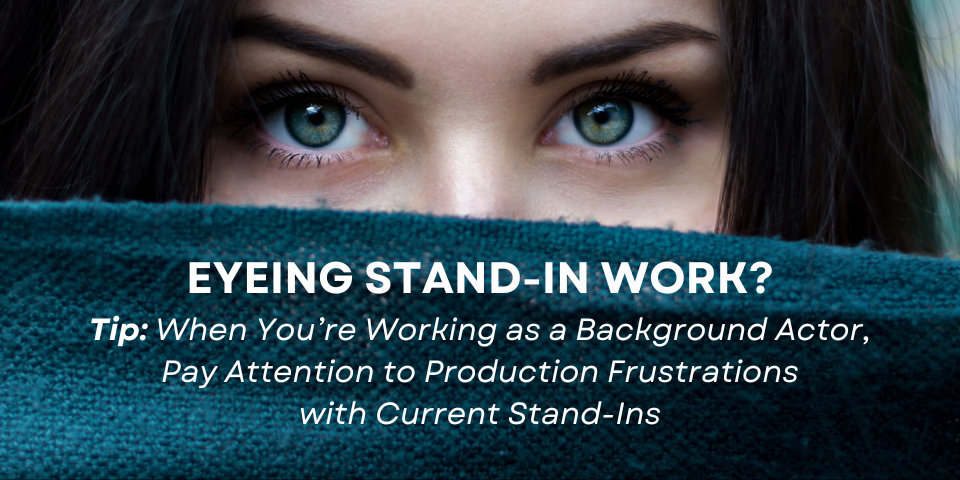If you’re working as a background actor, you may notice the production uses stand-ins to set up shots.
You may also start to notice that you want to work as a stand-in.
In fact, from time to time, productions will pull background actors to work as stand-ins in some scenes.
Stand-in work is not always as easy as it looks. Although some stand-in work involves simply standing on a mark and generally being quiet, professional stand-ins can testify to all the facets to professional-level stand-in work. In fact, Stand-In Central is dedicated to that very topic!
So, stand-in work is not always as easy as it looks — and if background actors are paying attention, they may notice how some stand-ins don’t do their jobs well.
- Productions may not be able to locate stand-ins when they’re needed.
- Stand-ins may be unfamiliar with the exact blocking in a scene, or not follow changes the actors made when shooting.
- Stand-ins may be too talkative or too unfocused.
- Production personnel may be evidently frustrated with stand-ins who aren’t up to snuff at their jobs.
This means that productions may be on the hunt for better stand-ins.
When working as a background actor, if you figure out how stand-ins are disappointing productions, and if you know you can provide better service to the production, then you may position yourself well for the job as a stand-in.
We’re not talking about “stealing” the job of a working stand-in. We’re talking about being ready for the opportunity should you get pulled to stand in.
If the opportunity comes and you get pulled from your background actor job in order to stand in, then if you know how you can overshine the inadequacies of the past stand-ins, then you may position yourself for more and more stand-in work on the job — and even a regular job as a stand-in on the production.
For example, if you find that stand-ins are nowhere to be found when called, if you dedicate your attention when pulled to stand in to being on set as soon as called — or being there right before being called! — you will likely outshine other stand-ins.
As another example, if you watch the monitors during takes, you may notice subtle blocking changes other stand-ins aren’t catching. Armed with that knowledge, you will outshine other stand-ins, being more knowledgable of the scene and thereby more helpful to the crew and production.
With just a little bit of focus on the stand-ins when you’re doing background work, you can easily figure out how to do their jobs better should you get the call. And if the production is on the hunt for better stand-ins, you may get the call to replace them.
Good luck!
How do you know a production is sour on its stand-ins? How have you applied those insights when pulled to stand in? Post your anecdotes in the comments below!







Leave A Comment